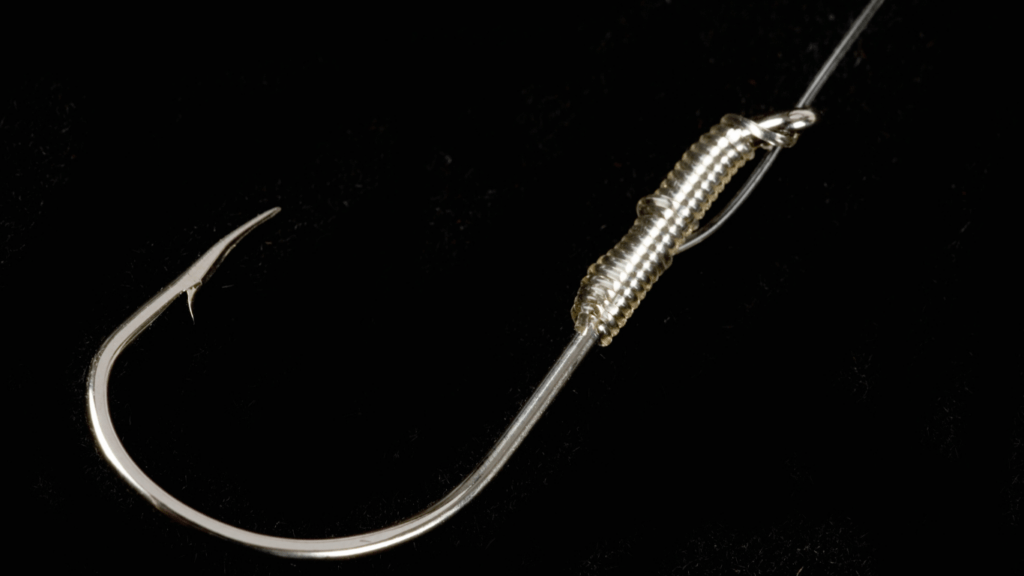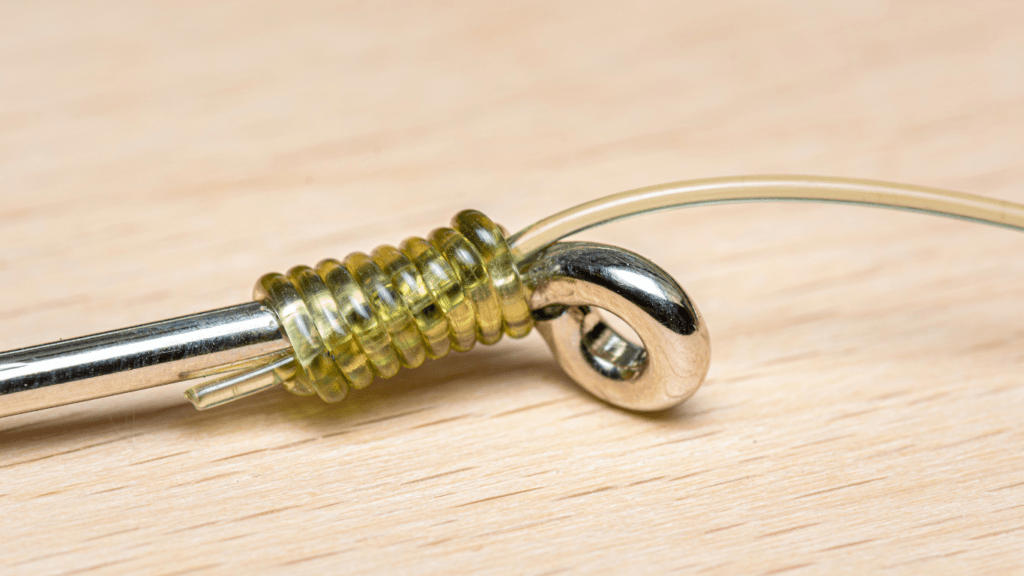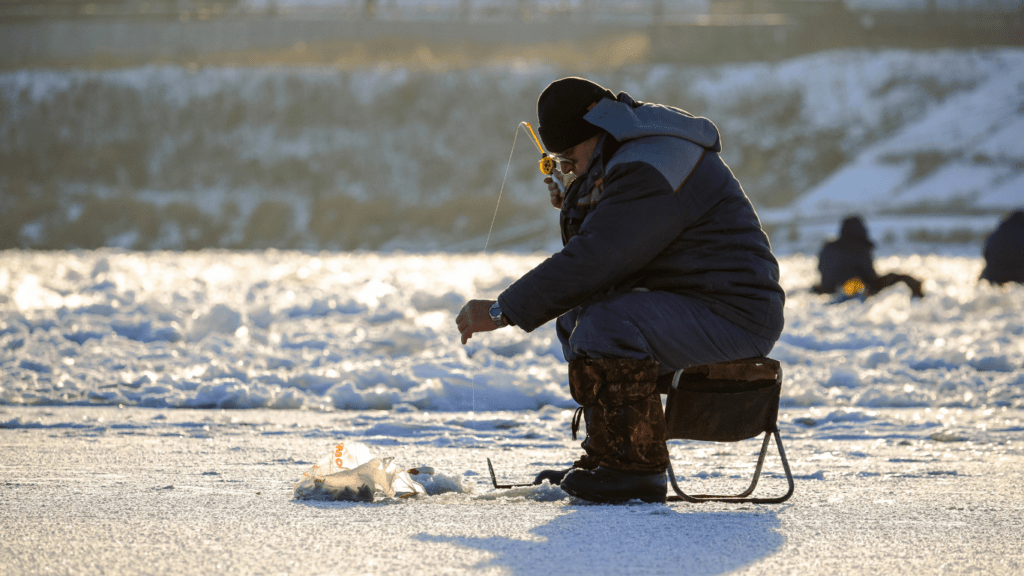Why Fishing Knots Matter
Fishing knots ensure a secure connection between line, hook, and bait, directly influencing an angler’s success. A poorly tied knot weakens under pressure, increasing the chances of losing fish or gear. Reliable knots distribute tension evenly, preventing breakage even under significant strain.
Different knots serve unique purposes depending on fishing techniques and gear. For instance, a loop knot enhances lure movement, while a snug knot secures the hook tightly. Choosing the right knot maximizes both functionality and durability in various fishing conditions.
Mastering proper knot-tying reflects an angler’s skill and attention to detail. Precision improves confidence on the water, ensuring every cast, hook, and reel-in performs as intended.
Key Features Of A Strong Fishing Knot
Knot Strength
A strong fishing knot retains at least 90% of the line’s original strength when tied correctly. Knots like the Palomar or Improved Clinch Knot, for example, are preferred for their high breaking strength. Ensuring the knot doesn’t slip under tension is essential for reeling in larger fish without failure.
Durability
Durability in a fishing knot means resistance to wear and environmental factors like water and UV exposure. Knots such as the Double Uni maintain integrity even in harsh conditions, making them suitable for saltwater environments or prolonged use.
Ease Of Tying
A good knot should be easy to learn and reproduce accurately. Simple knots like the Orvis Knot don’t require excessive coordination, allowing for quick tying in challenging situations, such as during low light or choppy waters.
Functionality
A knot’s ability to serve specific purposes determines its functionality. Loop knots, like the Non-Slip Loop Knot, maximize lure movement, while secure knots like the Snell Knot align the hook eye for better penetration during a strike.
Compactness
Compact knots pass easily through rod guides without snagging. Knots such as the Albright Knot form a slim profile, making them ideal for connecting lines of different diameters or types, such as braid to fluorocarbon leaders.
The Best Fishing Knots Every Angler Should Know

Mastering essential fishing knots improves angling efficiency and ensures a secure connection between line, hook, or lure. I’ve outlined six versatile knots that cater to various situations and fishing techniques.
Improved Clinch Knot
The improved clinch knot secures hooks, swivels, and lures to the fishing line. It’s strong, reliable, and maintains up to 95% of the line’s strength when tied correctly. To tie it, thread the line through the eye of the hook, wrap it around the standing line 5-7 times, pass the end through the loop closest to the eye, then back through the large loop created. Tighten by pulling the standing line while holding the hook.
Palomar Knot
The palomar knot works well with braided lines and offers exceptional strength. It’s ideal for tying lines to:
- hooks
- snaps
- lures
To tie it, double the line to form a loop, pass the loop through the hook eye, tie an overhand knot while keeping the hook inside the loop, then pull the loop over the hook and tighten.
Uni Knot
The uni knot is versatile and easy to master. It creates strong connections for hooks, swivels, or leader lines. To tie it, run the line through the eye of the hook and double it back, forming a loop. Wrap the tag end around both the loop and standing line 4-6 times, then pull the tag end to tighten the wraps. Slide the knot toward the hook and secure it by pulling the standing line.
Dropper Loop Knot
The dropper loop knot forms a loop along the main line, perfect for attaching additional hooks or baits. It’s frequently used for rigging in bottom fishing. Create the knot by forming a loop in the main line, wrapping one side of the loop around the other at least six times, and passing the loop through the middle opening. Hold the wraps and tighten the knot by pulling the loop and line ends.
Surgeon’s Knot
The surgeon’s knot is ideal for joining two lines of similar or different diameters, such as monofilament to fluorocarbon leaders. It’s quick and simple to tie. Overlap the two lines, tie an overhand knot with both lines, pass the tag ends through the loop two more times, and tighten while lubricating with water for reduced friction.
Blood Knot
The blood knot provides a streamlined connection for joining lines of similar diameter, often used for creating leaders. Overlap the ends of two lines and wrap one line around the other at least five times. Insert the tag end back through the center loop. Repeat the process with the second line. Moisten the knot and pull both standing lines tightly to secure.
Tips For Tying Fishing Knots Effectively
Mastering a few techniques ensures fishing knots are tied properly and hold under pressure. Consistency in these steps enhances knot strength and durability.
1. Moisten the Knot
Lubricate knots with water or saliva before tightening. This reduces friction and prevents line damage, especially for monofilament or fluorocarbon lines.
2. Pull Evenly and Securely
Apply steady tension when tightening the knot. Uneven pulling can weaken the knot or create loose loops, leading to failure under strain.
3.Trim Excess Line
Use sharp scissors or clippers to cut tags close to the knot. Keeping excess short minimizes snags and ensures a compact, streamlined profile.
4. Use the Right Knot for the Job
Match knots to their intended purpose. For example, use a Palomar Knot for securing hooks or a Blood Knot for joining lines of different diameters.
5. Practice Regularly
Repetition improves speed and accuracy. Practice tying key knots like the Uni Knot or Surgeon’s Knot at home to develop muscle memory.
6. Inspect Knots Before Use
Check knots for uniformity and tightness. A properly tied knot should appear symmetrical without twisted or overlapping loops.
Following these tips ensures fishing knots perform reliably in various conditions, increasing confidence during fishing trips.





